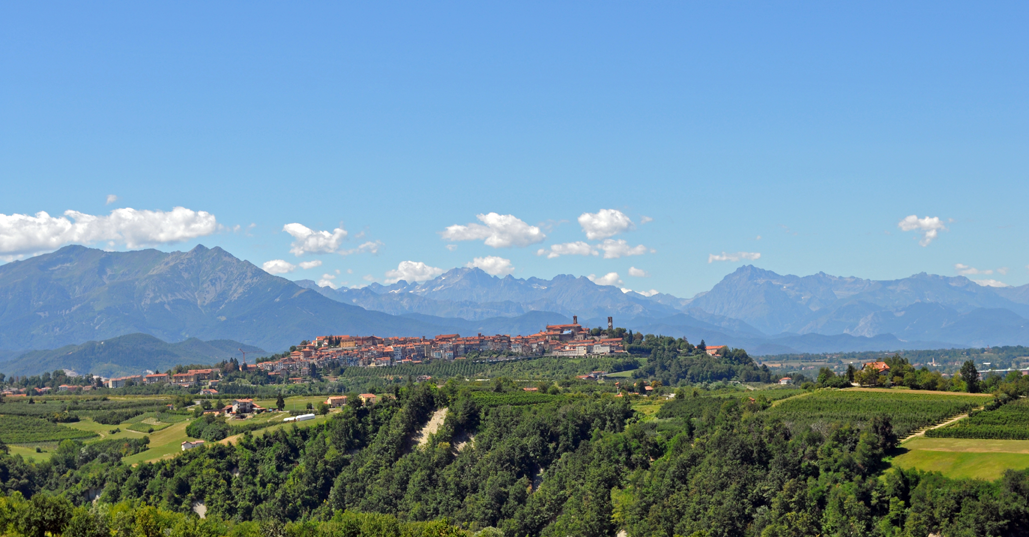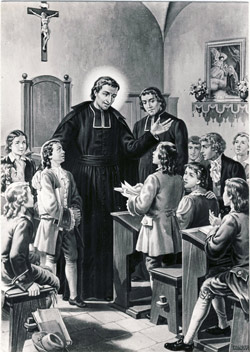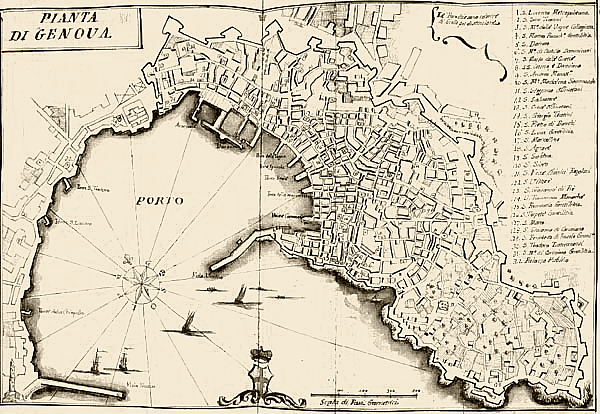|
Second Genoese–Savoyard War
The Second Genoese–Savoyard War (1672–1673) was a short war fought between the Duchy of Savoy and the Republic of Genoa. The war was launched by Charles Emmanuel II, Duke of Savoy, in 1672,Geoffrey Symcox, ''Victor Amadeus II: absolutism in the Savoyard State, 1675-1730''. International Crisis Behavior Series (University of California Press, 1983), 80. but an exiled Genoese named Rafaello della Torre had initially prompted Charles Emmanuel into declaring war.Edmund Ludlow, ''The memoirs of Edmund Ludlow, lieutenant-general of the horse in the army of the commonwealth of England, 1625-1672'', Volume 2. Editor: Charles Harding Firth (Clarendon Press, 1894), 438n. Charles Emmanuel believed that Spain, engaged in hostilities with France in the Franco-Dutch War, would not assist Genoa.Ciro Paoletti, ''A military history of Italy''. (Greenwood Publishing Group, 2008), 34. Charles Emmanuel's declaration of war was based on pretexts that were “slight and trivial,” and it was evi ... [...More Info...] [...Related Items...] OR: [Wikipedia] [Google] [Baidu] |
Status Quo Ante Bellum
The term is a Latin phrase meaning 'the situation as it existed before the war'. The term was originally used in treaties to refer to the withdrawal of enemy troops and the restoration of prewar leadership. When used as such, it means that no side gains or loses any territorial, economic, or political rights. This contrasts with , where each side retains whatever territory and other property it holds at the end of the war. Historical examples An early example is the treaty that ended the Byzantine–Sasanian War of 602–628 between the Eastern Roman and the Sasanian Persian Empires. The Persians had occupied Asia Minor, Palestine and Egypt. After a successful Roman counteroffensive in Mesopotamia finally ended the war, the integrity of Rome's eastern frontier as it was prior to 602 was fully restored. Both empires were exhausted after this war, and neither was ready to defend itself when the armies of Islam emerged from Arabia in 632. Another example is the sixteenth-cent ... [...More Info...] [...Related Items...] OR: [Wikipedia] [Google] [Baidu] |
Mondovì
Mondovì (; , ) is a town and ''comune'' (township) in Piedmont, northern Italy, about from Turin. The area around it is known as the Monregalese. The town, located on the Monte Regale hill, is divided into several '' rioni'' (ancient quarters): Piazza (the most ancient), Breo, Pian della Valle, Carassone, Altipiano, Borgato and Rinchiuso, lower, next to the Ellero stream, developed from the 18th century when industries developed in Mondovì and when it was reached by the railway. The Funicolare di Mondovì, a funicular railway reopened in 2006, links Breo with Piazza. It is the seat of the Roman Catholic Diocese of Mondovì. History Founded on a hilltop in 1198 by survivors of the destroyed village of Bredolo and by inhabitants of the neighboring villages of Vico (now Vicoforte), Vasco (now Monastero di Vasco) and Carassone (which was abandoned after the founding of the new city): an independent comune named ''Ël Mont ëd Vi'', meaning "The Mount of Vico" in Piedm ... [...More Info...] [...Related Items...] OR: [Wikipedia] [Google] [Baidu] |
1672 In Italy
Year 167 ( CLXVII) was a common year starting on Wednesday of the Julian calendar. At the time, it was known as the Year of the Consulship of Aurelius and Quadratus (or, less frequently, year 920 ''Ab urbe condita''). The denomination 167 for this year has been used since the early medieval period, when the Anno Domini calendar era became the prevalent method in Europe for naming years. Events By place Roman Empire * Lucius Aurelius Verus Augustus and Marcus Ummidius Quadratus Annianus become Roman Consuls. * The Marcomanni tribe wages war against the Romans at Aquileia. They destroy aqueducts and irrigation conduits. Marcus Aurelius repels the invaders, ending the Pax Romana (Roman Peace) that has kept the Roman Empire free of conflict since the days of Emperor Augustus. * The Vandals (Astingi and Lacringi) and the Sarmatian Iazyges invade Dacia. To counter them, Legio V ''Macedonica'', returning from the Parthian War, moves its headquarters from Troesmis in Moesia ... [...More Info...] [...Related Items...] OR: [Wikipedia] [Google] [Baidu] |
History Of Liguria
History is the systematic study of the past, focusing primarily on the human past. As an academic discipline, it analyses and interprets evidence to construct narratives about what happened and explain why it happened. Some theorists categorize history as a social science, while others see it as part of the humanities or consider it a hybrid discipline. Similar debates surround the purpose of history—for example, whether its main aim is theoretical, to uncover the truth, or practical, to learn lessons from the past. In a more general sense, the term ''history'' refers not to an academic field but to the past itself, times in the past, or to individual texts about the past. Historical research relies on primary and secondary sources to reconstruct past events and validate interpretations. Source criticism is used to evaluate these sources, assessing their authenticity, content, and reliability. Historians strive to integrate the perspectives of several sources to develop a ... [...More Info...] [...Related Items...] OR: [Wikipedia] [Google] [Baidu] |
1673 In Europe
Events January–March * January 22 – Impersonator Mary Carleton is hanged at Newgate Prison in London, for multiple thefts and returning from penal transportation. * February 10 – Molière's ''comédie-ballet'' ''The Imaginary Invalid'' premiers in Paris. During the fourth performance, on February 17, the playwright, playing the title rôle, collapses on stage, dying soon after. * March 29 – Test Act: Roman Catholics and others who refuse to receive the sacrament of the Church of England cannot vote, hold public office, preach, teach, attend the universities or assemble for meetings in England. On June 12, the king's Catholic brother, James, Duke of York, is forced to resign the office of Lord High Admiral because of the Act. April–June * April 27 – ''Cadmus et Hermione'', the first opera written by Jean-Baptiste Lully, premières at the Paris Opera in France. * May 17 – In America, trader Louis Joliet and Jesuit missionary- ... [...More Info...] [...Related Items...] OR: [Wikipedia] [Google] [Baidu] |
1672 In Europe
Year 167 ( CLXVII) was a common year starting on Wednesday of the Julian calendar. At the time, it was known as the Year of the Consulship of Aurelius and Quadratus (or, less frequently, year 920 ''Ab urbe condita''). The denomination 167 for this year has been used since the early medieval period, when the Anno Domini calendar era became the prevalent method in Europe for naming years. Events By place Roman Empire * Lucius Aurelius Verus Augustus and Marcus Ummidius Quadratus Annianus become Roman Consuls. * The Marcomanni tribe wages war against the Romans at Aquileia. They destroy aqueducts and irrigation conduits. Marcus Aurelius repels the invaders, ending the Pax Romana (Roman Peace) that has kept the Roman Empire free of conflict since the days of Emperor Augustus. * The Vandals ( Astingi and Lacringi) and the Sarmatian Iazyges invade Dacia. To counter them, Legio V ''Macedonica'', returning from the Parthian War, moves its headquarters from Troesmis in M ... [...More Info...] [...Related Items...] OR: [Wikipedia] [Google] [Baidu] |
Conflicts In 1673
Conflict may refer to: Social sciences * Conflict (process), the general pattern of groups dealing with disparate ideas * Conflict continuum from cooperation (low intensity), to contest, to higher intensity (violence and war) * Conflict of interest, involvement in multiple interests which could possibly corrupt the motivation or decision-making * Cultural conflict, a type of conflict that occurs when different cultural values and beliefs clash * Ethnic conflict, a conflict between two or more contending ethnic groups * Group conflict, conflict between groups * Intragroup conflict, conflict within groups * Organizational conflict, discord caused by opposition of needs, values, and interests between people working together * Role conflict, incompatible demands placed upon a person such that compliance with both would be difficult * Social conflict, the struggle for agency or power in something * Work–family conflict, incompatible demands between the work and family roles of ... [...More Info...] [...Related Items...] OR: [Wikipedia] [Google] [Baidu] |
Conflicts In 1672
Conflict may refer to: Social sciences * Conflict (process), the general pattern of groups dealing with disparate ideas * Conflict continuum from cooperation (low intensity), to contest, to higher intensity (violence and war) * Conflict of interest, involvement in multiple interests which could possibly corrupt the motivation or decision-making * Cultural conflict, a type of conflict that occurs when different cultural values and beliefs clash * Ethnic conflict, a conflict between two or more contending ethnic groups * Group conflict, conflict between groups * Intragroup conflict, conflict within groups * Organizational conflict, discord caused by opposition of needs, values, and interests between people working together * Role conflict, incompatible demands placed upon a person such that compliance with both would be difficult * Social conflict, the struggle for agency or power in something * Work–family conflict, incompatible demands between the work and family roles of a ... [...More Info...] [...Related Items...] OR: [Wikipedia] [Google] [Baidu] |
History Of Savoy
The history of Savoy presents a synthesis of the various periods, from prehistory to the present day, of the geographical and historical entity known as Savoy, a territory whose definition has varied for historical periods, until it was defined by the two Departments of France, French departments of Savoie and Haute-Savoie.Pittard, 2017, ''Histoire de la Savoie et de ses Etats,'' p.982 According to Abbé Adolphe Gros, the territory of Savoie comprises the "country situated between the Rhône and the Alps, south of Lake Geneva and north of the Dauphiné ". Savoie thus forms a "solid block, a sort of thick tree trunk stretching 145 km from north to south, and swelling to a hundred km from east to west, covering an area of just over 10,000 km2". The region's varied landscapes are marked by Alpine influences, from the lowland Alpine foothills, Pre-Alps to the snow-capped peaks of the Alps, linked by large intra-Alpine valleys. These valleys are at the origin of the traditional provinc ... [...More Info...] [...Related Items...] OR: [Wikipedia] [Google] [Baidu] |
Wars Involving The Republic Of Genoa
War is an armed conflict between the armed forces of states, or between governmental forces and armed groups that are organized under a certain command structure and have the capacity to sustain military operations, or between such organized groups. It is generally characterized by widespread violence, destruction, and mortality, using regular or irregular military forces. ''Warfare'' refers to the common activities and characteristics of types of war, or of wars in general. Total war is warfare that is not restricted to purely legitimate military targets, and can result in massive civilian or other non-combatant suffering and casualties. Etymology The English word ''war'' derives from the 11th-century Old English words and , from Old French ( as in modern French), in turn from the Frankish , ultimately deriving from the Proto-Germanic language">Proto-Germanic . The word is related to the Old Saxon , Old High German , and the modern German , meaning . History Ant ... [...More Info...] [...Related Items...] OR: [Wikipedia] [Google] [Baidu] |
First Genoese–Savoyard War
The Relief of Genoa took place between 28 March 1625 and 24 April 1625, during the Thirty Years' War. It was a major naval expedition launched by Spain against the French-occupied Republic of Genoa, whose capital, Genoa, was being besieged by a joint Franco-Savoyard army composed of 30,000 men and 3,000 cavalry. In 1625, when the Republic of Genoa, traditionally an ally of Spain, was occupied by French troops of the Duke of Savoy, the city underwent a hard siege. It was known in Genoese governmental circles that one of the reasons why the Dutch government had offered their help to the Franco-Savoyard army was so that they could "hit the bank of the King of Spain". However, the Spanish fleet commanded by General Álvaro de Bazán, Marquis of Santa Cruz, came to the aid of Genoa and relieved the city. Returning its sovereignty to the Republic of Genoa and forcing the French to raise the siege, they consequently began a combined campaign against the Franco-Savoyard forces that had ... [...More Info...] [...Related Items...] OR: [Wikipedia] [Google] [Baidu] |




